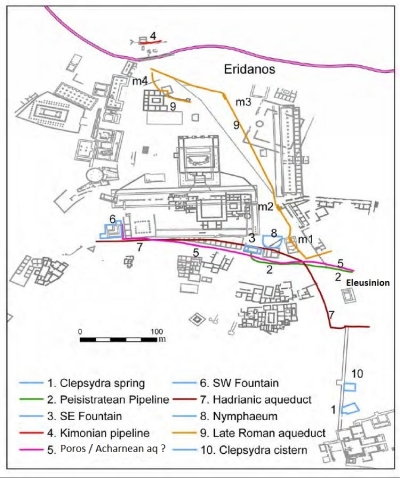
The authorities made a beautiful job by exposing some findings in the hall of the metro stations Evangelismos, Syntagma (in- and outside) and Monastiraki, see photo's below. For a short description, see Chiotis 2011a, 172.
| For the photo's, see below |
| For the complete website |
|
Coordinates of the Neo Ionia bridges: * Kapodistriou 38 02 00.77N 23 46 22.2E * Perissos 38 02 20.89N 23 45 34.48E |

|
| Name aqueduct | Period | Type | Length | Remarks |
|---|---|---|---|---|
| Peisistratid | 6th - 4 th c BCE | Tunnel / shafts / pipes | 6 km? | in the 4th c renewed |
| Academy / Kimonian | 5th c BCE | Tunnel / shafts / pipes | 2 km | Extension of the Peisistratid aqueduct |
| Acharnian / Poros | 4th c BCE | Tunnel / shafts / pipes | 15 - 20 km | First knwon from inscriptions |
| Hadrian | 125 - 140 AD | Tunnel and shafts | 19.8 km | See separate entry |
| Long Walls | 2nd c CE? | Tunnel and shafts | 9 km? | Must is still unknown |
| Late Roman | 5th c CE | Channel near the surface | 21 km | Incl. two bridges, feeding mills |
| Recommended literature : |
|
| Recommended websites : | |
| How to visit : | see above |
| HOME | More literature on more aqueducts | Last modified: August, 2015 - (webmaster) |